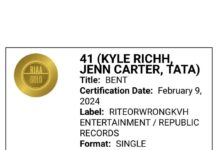Canadians are systematic spenders and borrowers – it is embedded in our culture and forms part of our very identity. We are a country of vast resources, but at the same time a country of massive debt. You only have to take a quick peek at the sheer volume of lenders, loan companies and easy access to credit that exists to understand that this certainly is the case.
When you mix unlimited credit with a culture of reckless spending and a lack of financial education, you end up with huge problems.
Enter bankruptcies, consumer proposals and credit counseling on a mass scale.
As a mortgage broker, approximately ⅓ of my applications contain credit issues. This ranges from missed payments, collections, consumer proposals, judgements and the king of kings – bankruptcies. Often, there is more than one issue as well but not to panic, there are options for those who get caught up in the whirlwind and quicksand of debt and credit.
Missed Payments & Collections
Missed payments or small collections could be problematic for your mortgage application depending on the severity and frequency that they occur. Clearly, one-off payments can be mitigated with a simple explanation (forgot to pay, switched bank accounts, etc) but if there are numerous missed payments that span over multiple years, justifying this becomes more and more complicated. Obviously, anyone can forget to pay something once, but forgetting to pay your bills over and over again shows that you are either irresponsible with your debts or worse yet, incapable of paying them on time.
It is important to recognize that missed payments or collections do in fact decrease your beacon score, the level of which is based on the amount of the payment, the status (paid, unpaid, written-off, etc.) and the amount of time that has passed since it occurred. If your credit score falls below the minimum thresholds set by the various lenders and/or mortgage insurers, your application will most likely be declined, regardless of the severity or frequency of the debt in question. I have had countless files that for the most part, had strong credit history but due to one bad collection or credit account, the borrower’s credit score was severely affected and thus the file no longer qualified.
Consumer Proposals & Bankruptcies
When a borrower becomes insolvent and files an application under the Bankruptcy and Insolvency Act, there is no turning back. The damage commences immediately and the debtor must work through the legal process as quickly as possible to ensure that they can start rebuilding their life sooner than later.
The most important factor with a proposal or bankruptcy is the discharge; that is, the moment in time where the courts officially absolve you from your debts. Before this date, the borrower remains insolvent and legally the debts are still owed. Credit can only begin to heal once the borrower is discharged so it is important to obtain this court ruling as soon as possible.
Often, debtors are (mis)guided into long-term consumer proposals payment plans that can take years to finalize, but this is actually against their own best interests. As mentioned, credit only begins to heal once the debts are discharged so structuring long payment plans only delays the healing process. It is much more effective to offer lump-sum payments under proposal applications or flat out bankruptcies, depending on the amount of assets the debtor has. Bankruptcies often finalize quicker than proposals and thus result in quicker turnaround times for rebuilding credit. From the lender’s perspective, someone who files a consumer proposal or bankruptcy is treated in the exact same way. There is a misconception that filing a proposal is not as severe as a bankruptcy but that is simply not accurate in terms of future mortgage financing. They are, in essence, the same. The only difference is that proposals are removed from your credit report 3 years after discharge versus 7 years for bankruptcies.
Once discharged, the credit can start to heal but that does not insinuate that a borrower will automatically qualify for a new mortgage. Quite the opposite actually. On the major lender and insured side of mortgage financing, lenders generally have two rules:
Minimum of two years must have passed since the discharge date;
Borrower must have re-established credit (new credit, in good standing) for at least one year and a minimum of two different types of accounts.
However, with B-lenders and private lenders, borrowers who are just 1-day discharged can qualify for financing under standard lender policies. The caveat here however is that a minimum of 20% down payment is required and individuals fresh out of an insolvency normally don’t have much liquid assets to speak of.
Tips to Quick Improving Bad Credit
Understanding the credit score algorithm will help fast track your credit recovery plan and get you into mortgage financing quicker than those who simply sit back and let time take its course.
Here are several tips to rectifying and improving bad credit:
Pay any outstanding collections immediately. Regardless of the correctness or fairness of some of these accounts, it is much more beneficial to pay this off and fight later. Pride often clouds our judgement and people end up losing much more in the end due to the negative effect these minor collections have on their financial profile.
If you are someone who is prone to missing payments, set up automated reminders to pay bills prior to the due dates or better yet, have the payments be withdrawn from your bank account automatically.
Set up credit monitoring – this allows you to be notified immediately of any changes whatsoever to your credit account. Often, small errors can be mitigated and corrected and it’s best to get ahead of issues before the damage gets worse.
If you opt to file for a consumer proposal or bankruptcy, set your goal on obtaining the discharge as soon as possible. Until then, your credit will not be able to begin the healing process.

























